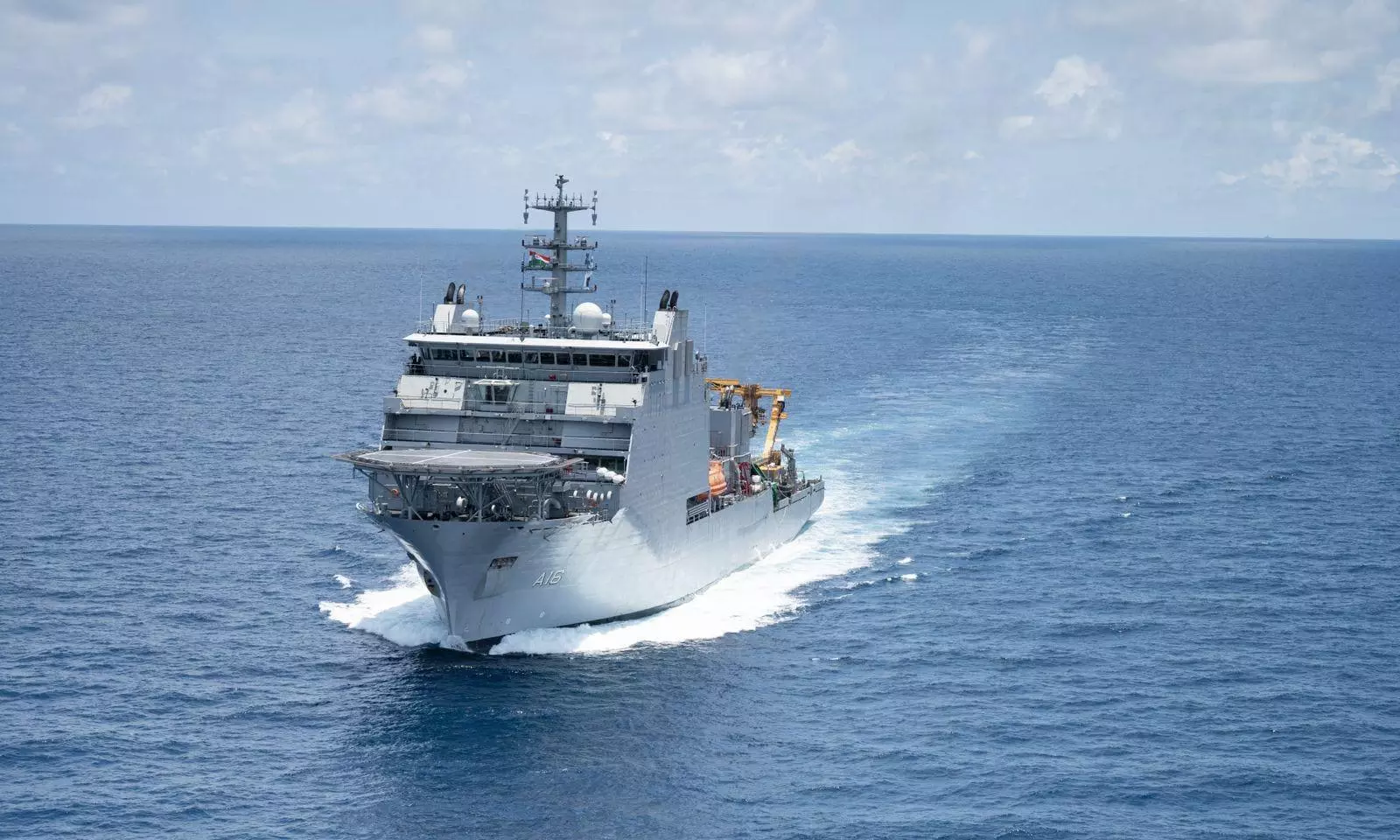
Indian Navy rescues crew in South China Sea exercise
text_fieldsThe Indian Navy achieved a major milestone in undersea operations with the successful deployment of its Deep Submergence Rescue Vehicle (DSRV) Tiger X during a multinational submarine rescue exercise, XPR-25, hosted by the Singapore Navy.
For the first time, India’s submarine rescue system operated beyond the Indian Ocean, carrying out a full-spectrum rescue drill in the South China Sea.
During the exercise, the Tiger X docked with allied submarines under simulated emergency conditions, demonstrating India’s growing capabilities in undersea operations.
XPR-25 took place from September 15 to 25 and involved over 40 countries. The event had two phases: a shore phase from September 15-20 and a sea phase from September 21-25. Three submarine rescue units participated in the sea phase, each deployed from a dedicated mother ship. India’s unit operated from the recently commissioned INS Nistar, while Singapore and Japan used MV Swift Rescue and JS Chiyoda, respectively. Submarines from South Korea, Japan, and Singapore simulated “disabled submarines” (DISSUBs) to test rescue procedures.
The highlight came on September 23 when the Tiger X performed its first dive outside Indian waters. The mini-submersible successfully docked with South Korea’s submarine Shin Dol-Seok (S-082) and Singapore’s RSS Invincible, completing two successful rescue matings.
India currently operates two DSRVs procured from UK-based James Fisher Defence (JFD Global) under a £193 million contract signed in 2016. Each system includes the rescue vehicle, launch and recovery equipment, TUP (Transfer Under Pressure) systems, and comprehensive logistics support with 25 years of maintenance. The TUP system allows safe transfer of personnel from a rescue submarine or diving bell to another pressurised space without causing decompression sickness.
The exercise also marked the first operational deployment of INS Nistar, India’s indigenously designed Diving Support Vessel (DSV). Commissioned on July 18, the 118-metre-long ship was built by Hindustan Shipyard Limited. It was ordered in 2018, but delays due to the COVID-19 pandemic pushed its launch to 2022, with formal delivery on July 8. Assigned to the Eastern Naval Command in Visakhapatnam, Nistar supports India’s nuclear-powered submarines.
With a displacement exceeding 10,000 tons, a beam of 23 metres, and an endurance of over 60 days, Nistar is equipped as a DSRV mothership. It features a 15-tonne subsea crane, diving bell, ROVs, side-scan sonar, compression chambers, a Self-Propelled Hyperbaric Life Boat, and a front flight deck for helicopter operations.












